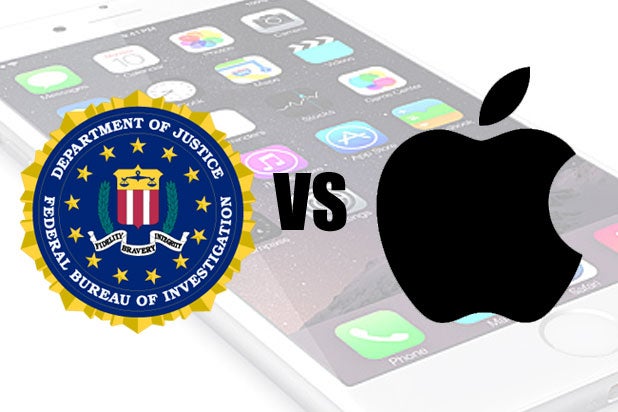 |
As the events unfolded:
On December 2, 2015, 14 people were killed and 22 were seriously injured when Syed Rizwan Farook and Tashfeen Malik, a married couple opened fire in a public health training program in San Bernardino, California.
 |
| Tashfeen Malik and Rizwan Farook |
After shooting there the couple fled the scene .Pursued by cops after four hours the couple was shot dead. On December 6 after an investigation carried out by FBI, president Obama stated the unfortunate event as an act of terrorism.
| The rented SUV the couple used to fled the scene |
FBI's row with Apple :
Both Farook and Tashfeen died in that SUV during shootout with police. When situation was controlled and investigation started police found an iPhone 5C in the SUV in which Farook and Tashfeen were killed. The information on that phone was off course very critical but the iPhone was Pin code protected. In order to access the data in its storage, calls ,emails etc FBI asked Apple to develop a new software to gain access to data in the phone but Apple denied due to its policy to never undermine the security features of its products.
In 1993, the National Security Agency (NSA) introduced the Clipper chip, an encryption device with an acknowledged backdoor for government access, that NSA proposed be used for phone encryption. The proposal touched off a public debate, known as the Crypto Wars, and the Clipper chip was never adopted.
It was revealed as a part of the 2013 mass surveillance disclosures by Edward Snowden that the NSA and the British Government Communications Headquarters (GCHQ) had access to the user data in iPhones, BlackBerrys, and Android phones and could read almost all smartphone information, including SMS, location, emails, and notes.
According to The New York Times , Apple developed a new encryption method for its iOS operating system, versions 8 and later, "so deep that Apple could no longer comply with government warrants asking for customer information to be extracted from devices". Throughout 2015, prosecutors argued for the U.S. government to be able to compel decryption of iPhone contents.
In September 2015, Apple released a white paper detailing the security measures in its then-new iOS 9 operating system. The iPhone 5C model can be protected by a four-digit PIN code. After more than ten incorrect attempts to unlock the phone with the wrong PIN, the contents of the phone will be rendered unaccessible by erasing the AES encryption key that protects its stored data. According to the Apple white paper, iOS includes a Device Firmware Upgrade (DFU) mode, and that "[r]estoring a device after it enters DFU mode returns it to a known good state with the certainty that only unmodified Apple-signed code is present.
Back Story :
The Clipper Chip :
Revealing of Classified Information by Edward Snowden :
Apple's Reaction to Edward Snowden's disclosures :
According to The New York Times , Apple developed a new encryption method for its iOS operating system, versions 8 and later, "so deep that Apple could no longer comply with government warrants asking for customer information to be extracted from devices". Throughout 2015, prosecutors argued for the U.S. government to be able to compel decryption of iPhone contents.
New Security Details in iOS 9 :
Legal Standoff and Court Orders :
Apple's Denial to FBI :
When FBI first asked Apple to create a program to pass through the security of the phone, Apple declined it.Then FBI requested a federal judge to issue a court order, mandating Apple to create and provide the requested software .
Response to Court Order :
Apparently that order was not subpoena, but rather was issued under the All Writs Act of 1789 which in legal meaning was not so effective. So Apple declined the court order, citing the security risks that the creation of a backdoor would pose towards their customers. It also stated that no government had ever asked for similar access.
Apple CEO Tim Cook's Statement:
On February 16, 2016, Apple chief executive officer Tim Cook released the following statement to his customers:
"The United States government has demanded that Apple take an unprecedented step which threatens the security of our customers. We oppose this order, which has implications far beyond the legal case at hand. This moment calls for public discussion, and we want our customers and people around the country to understand what is at stake"
Tim Cook made clear they were opposing court orders just for the data security of their customers.
Another Option Given to Apple :
In response to the opposition, on February 19, 2016, the U.S. Department of Justice filed a new application urging a federal judge to compel Apple to comply with the order. The new application stated that the company could install the malware on the phone in its own premises, and after the FBI had hacked the phone via remote connection, Apple could remove and destroy the malware .
What's Next:
Currently the case is going on. Apple has hired attorneys Ted Olson and Theodore J. Boutrous Jr. to fight the order on appeal.
According to the Wall Street Journal Google parent company Alphabet and Facebook are preparing to file a motion backing Apple.
Many technology giants are working on a joint submission against the government demands.
Google will also file its brief soon.
Microsoft being not so responsive at first, now planning to file an amicus brief too.
So let's see what happens next.





